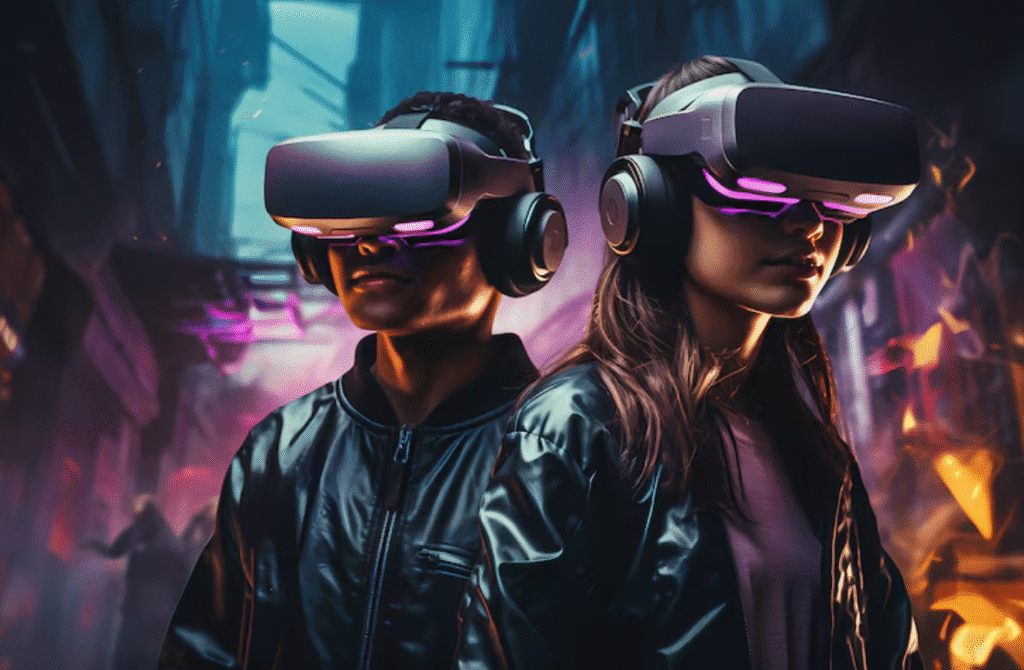In 2025, virtual reality (VR) and augmented reality (AR) are no longer experimental fads—they’re essential parts of the PC gaming ecosystem. Once niche technologies have matured into mainstream tools for immersion, interaction, and storytelling.
🧠 What’s New in VR Hardware?
- 4K per-eye resolution with HDR support
- Eye-tracking for foveated rendering and emotional input
- Full-body tracking with wireless sensors
- Haptic gloves and suits for tactile feedback
- VR-ready gaming laptops with built-in sensor syncing
Headsets like the Valve Index 2, Meta RiftX, and Sony Immersion PC now provide lifelike visuals and intuitive interfaces, without the motion sickness of early VR systems.
🎮 Top PC VR Games of 2025
- Half-Life: Resonance – A sequel that sets new standards for immersive storytelling
- Red Matter 3 – An emotional sci-fi thriller with zero-gravity movement
- Frostbyte Arena – A VR battle royale with environmental interactivity
- Mindforge – A puzzle-adventure where your focus and emotions affect the world
These games are built for VR, not just compatible with it—providing full locomotion, voice-controlled interaction, and physics-based gameplay.
🧩 AR in Strategy and Simulation
AR is surging in genres like:
- Real-time strategy (overlaying troop movements across your desk)
- City-builders (allowing a 3D city to grow around your physical workspace)
- Management sims (turning your office into a control center)
AR glasses like Microsoft HoloLens 3 and VisionBeam One let PC gamers interact with games without isolating from their environment.
🧠 Beyond Entertainment
VR and AR are also enhancing:
- Esports viewing (watch matches in 3D arenas)
- Game development (test level designs in immersive space)
- Educational mods (historical VR mods in Assassin’s Creed Origins VR)
📈 The Bottom Line
In 2025, if you’re a PC gamer, VR and AR aren’t just optional—they’re part of the next level. With better ergonomics, smarter software, and lower prices, immersive gaming is more accessible, social, and essential than ever.




